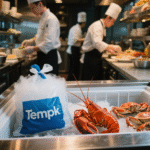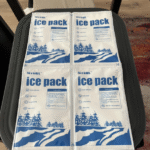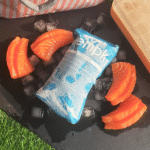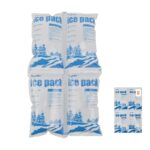La glace sèche emballe Melbourne: Comment choisir, Taille & Bateau
If you ship frozen goods, dry ice packs Melbourne are your safest bet. This guide shows you how to choose formats, size your load, and pack to UN1845 rules so your product arrives frozen and compliant. You’ll get a quick calculator, a copy‑paste SOP, Melbourne courier notes, et 2025 regulation updates you can act on today. We’ve consolidated and improved your three drafts into one best‑in‑class article.
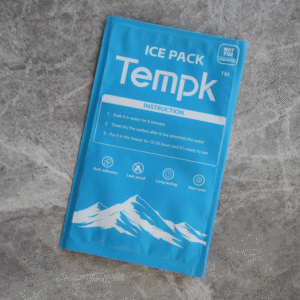
-
Which dry ice packs Melbourne format works for your lane (pellets vs blocks; PSE, PPE, Pur, VIP)
-
How to pack dry ice packs Melbourne for UN1845 compliance without delays or damage
-
How much dry ice to buy using a simple 24–72 h sizing rule and a quick estimator
-
When to switch to PCM gel bricks for +2–8 °C or −21 °C targets without CO₂ venting
-
What changed in 2025 (IATA DGR 66th ed., ADG 7.9) and what it means for you
Quoi dry ice packs Melbourne should you pick—and when?
Réponse courte: Use dry ice packs Melbourne when you must keep product ≤ −18 °C end‑to‑end. Les blocs durent plus longtemps; pellets spread cold evenly. Choose EPS for short holds, EPP/PUR for better performance, and VIP when you need 48–72 h autonomy without bulky loads. For chilled lanes (+2–8 ° C), use PCM gel bricks so you avoid freeze damage and CO₂ concerns.
Pourquoi ça compte pour toi: You’re balancing product integrity, courier acceptance, et le budget. Viande, fruit de mer, glace, and frozen desserts love dry ice; vaccines or “do‑not‑freeze” items prefer PCM gels. Think by lane: metro same‑day vs regional VIC vs interstate 48–72 h. Pair the right coolant with right insulation and you’ll cut spoil claims and shipping weight.
Pellets or blocks for frozen food shipping?
Boulettes improve contact and cold distribution but sublimate faster; blocs sublimate slower and add hold time. Many shippers mix them: blocs pour la durée, pellets to “wrap” the payload. For passenger‑vehicle legs, ventilate, crack windows, and avoid enclosed boots—CO₂ is heavier than air and can pool at floor level.
| Choix | Utilisation typique | What it does best | Ce que cela signifie pour vous |
|---|---|---|---|
| Boulettes (3–16 mm) | Evenly surround payload | Fast pull‑down, uniform cold | Great for multi‑item boxes; watch faster loss |
| Blocs (2.5–5 kg) | Long legs, fewer openings | Slower sublimation | Fewer re‑packs; steadier hold |
| PCM gel bricks (+5 °C/−21 °C) | Chilled or −21 °C lanes | Tight temperature bands | No DG paperwork; safer in lifts/cars |
Practical tips that pay off
-
Pré-récevoir la charge utile: Dry ice maintains frozen status; it doesn’t “make” frozen from warm.
-
Placer la glace sèche sur le dessus: Gas sinks; cold air descends. Keep vent paths open.
-
Right box, Moins de glace: Upgrading EPS → VIP can cut coolant mass 30–50% for the same hold time.
Étude de cas: A Fitzroy patisserie added ~3 kg dry ice on top of pre‑frozen macarons and used a vented lid pad. Résultat: crisp shells after a 48‑hour interstate leg and fewer claims.
How do you pack dry ice packs Melbourne for compliance?
Core rule: Utiliser un emballage ventilé, apply UN1845 / Classe 9 marques, and list net dry‑ice weight (kg). Pour l'air, add the AWB entry (no DG Shipper’s Declaration when used as a refrigerant for non‑DG goods).
Pourquoi ça compte: Airlines and couriers accept dry ice daily, but only when vented and correctly labeled. On domestic road/rail legs, follow ADG requirements. Clair, legible labels and trained handlers prevent rework fees and depot delays.
Copy‑paste SOP (use as your bench card)
-
Condition préalable: Freeze payload and pre‑chill shipper.
-
Charger: Payload at bottom → spacer → glace sèche sur le dessus with a gas‑escape path.
-
Fermer: Utiliser un couvercle ventilé; never seal vents.
-
Étiquette: "UN1845, Dioxyde de carbone, solide (Glace sèche), Classe 9, poids net: X kg».
-
Docs: Add AWB entry for air; train staff on CO₂ handling and PPE.
| Mode | What you must include | Extra notes | Outcome for you |
|---|---|---|---|
| Air (Voici pi 954) | UN1845, nom propre, Classe 9, Kg net; AWB entry | Emballage ventilé; overpack marking if used | Fewer acceptance delays |
| Route / rail (ADG 7.9) | ADG‑compliant marking/segregation | Driver/handler awareness | Smooth depot hand‑off |
Safety essentials (Ne sautez pas)
-
Ventilation + EPP: Insulated gloves, protection des yeux; avoid airtight boxes.
-
Exposition au coré: Respect workplace limits; never ride in a closed lift with dry ice.
-
Stockage: Cool, ventilated area; pas in sealed fridges or cold rooms.
How much dry ice do dry ice packs Melbourne shipments need?
Règle rapide: Plan ~2.3–4.5 kg per 24 h Dans un expéditeur isolé typique. Ajouter 20–30% de tampon for summer heat or delays. Better insulation = less ice.
Make it practical: Multiplier par les jours de transit, ajuster l'isolation (EPS vs EPP/PUR vs VIP), and add buffer for hot vans or cross‑docks. Pre‑freeze everything to avoid “using” dry ice for pull‑down.
“Grab‑and‑go” estimator
-
24 H: ~2.3–4.5 kg
-
48 H: ~4.5–9 kg
-
72 H: ~7–13.5 kg
| Charge utile | 24 h baseline | 48 h baseline | 72 h baseline | Tweak this… |
|---|---|---|---|---|
| Petit (≤ 3 kg) | 2.3–3.5 kg | 4.5–7 kg | 7–10 kg | Thin walls? Use upper range |
| Moyen (3–8 kg) | 3–4,5 kg | 6–9 kg | 9–13.5 kg | +20% en été |
| Grand (8–15 kg) | 4–6 kg | 8–12 kg | 12–18 kg | Add buffer for multi‑stops |
Mini‑calc (copy this):
kg dry ice ≈ (heat load kJ ÷ 571) × 1.25
Use higher insulation and lower ambient assumptions to trim mass without risking excursions.
When should you choose PCM gel over dry ice in Melbourne?
Use PCM gel bricks when your target is +2–8 ° C ou −21 ° C and you want non-DG manutention. Utiliser la glace sèche when you need deep‑freeze (≤ −18 °C) or longer holds in a compact box. Many teams carry both: dry ice for frozen SKUs, PCM +5 °C for chilled SKUs that must not freeze.
Decision cues you’ll actually feel
-
Frozen steaks 48 h to Geelong: glace carbonique (haut de gamme, ventilé).
-
Cheesecakes overnight St Kilda: PCM +5 °C (no freezing risk).
-
Clinical samples at −20 °C: PCM −21 °C or dry ice, per operator limits.
2025 trends shaping dry ice packs Melbourne
Fresh for 2025: IATA DGR 66th ed. reinforces PI 954 marking and overpack clarity. ADG 7.9 is active for domestic legs. Sustainability rises: curbside‑recyclable liners, bio‑based PCMs, and CO₂ recovery at plants. Melbourne’s e‑commerce growth keeps pressure on last‑mile temperature control and packaging waste reduction.
Dernier progrès en un coup d'œil
-
Carrier readiness: Premium air services accept compliant UN1845; expect DG surcharges.
-
Less coolant, same result: VIP shippers slash heat gain, cutting dry ice 30–50%.
-
Safety culture: More floor‑level CO₂ monitors near docks and in vans.
Perspicacité du marché: With more frozen and chilled deliveries city‑wide, investing in validated insulation and right‑sized dry ice packs Melbourne is now a competitive advantage, not a nice‑to‑have.
FAQ
How long do dry ice packs Melbourne last in a typical cooler?
À propos 2.3–4.5 kg per 24 h en fonction de l'isolation et de la chaleur ambiante. Ajouter un 20–30% de tampon pour les retards.
Is it safe to carry dry ice in a car around Melbourne?
Oui-ventilate and avoid long storage in a closed boot. CO₂ is heavier than air; crack windows and unload quickly.
What labels are mandatory when I ship with dry ice?
Marque UN1845, «Dioxyde de carbone, solide (Glace sèche)», Classe 9, et net kg sur le paquet; include the AWB entry pour l'air.
Can I mix gel packs with dry ice?
You can. Don’t block vent paths. Use gel to buffer delicate items near the top; dry ice above for deep‑freeze.
What food‑safety targets should I plan for?
Keep hazardous foods ≤ 5 °C or ≥ 60 °C. For frozen, aim ≤ −18 °C and minimize warm‑time exposure during packing.
À propos du tempk
We are a Melbourne‑savvy cold‑chain partner focused on right‑sized packaging, compliant documentation, and validated performance. Our library spans dry‑ice‑ready shippers et high‑stability PCM packs (−21 °C to +5 °C). Clients see fewer excursions and lower per‑shipment costs through smarter insulation and coolant mixes.
Appel à l'action: Talk to Tempk’s cold‑chain team for a free lane assessment and a compliant UN1845 label set.
















